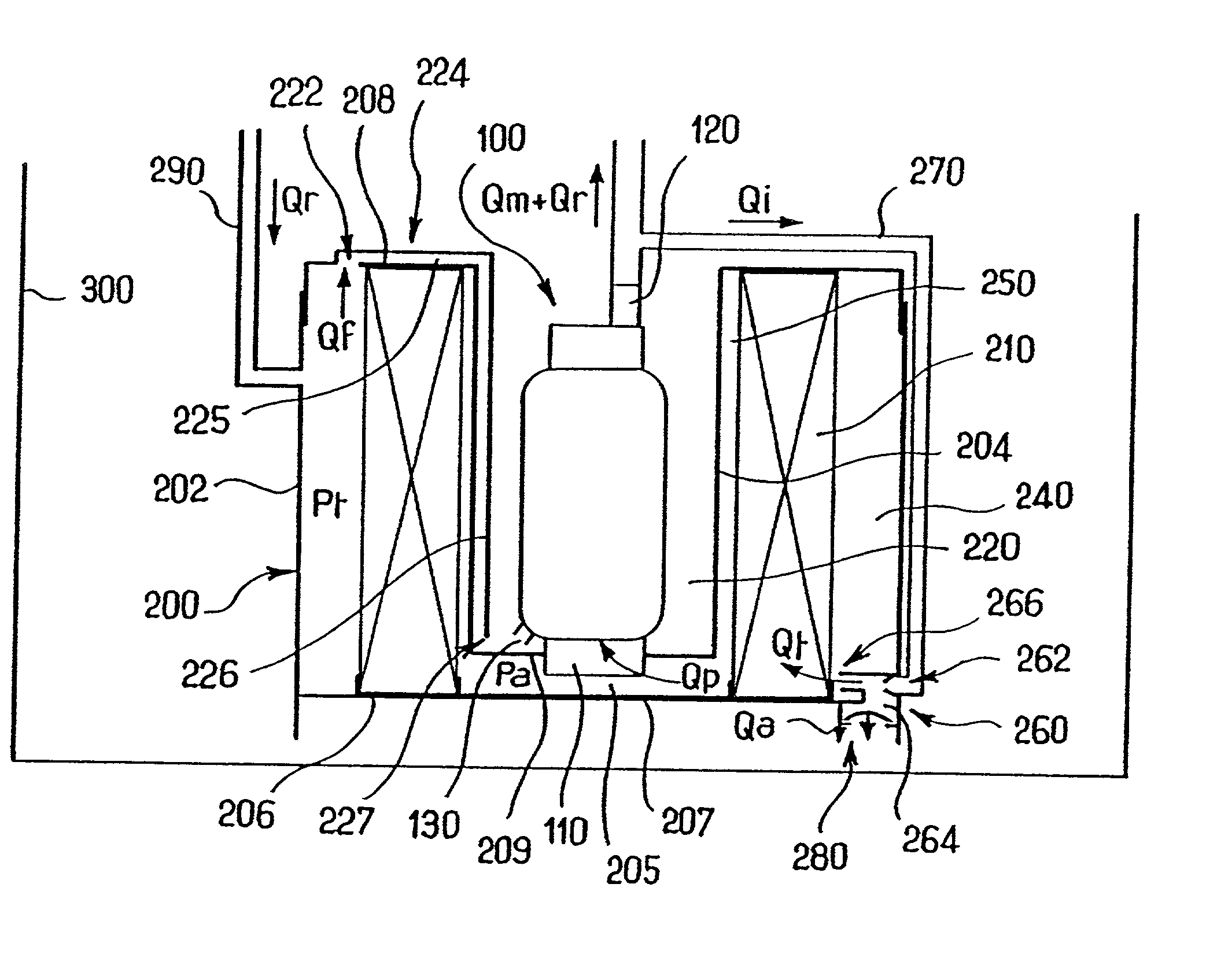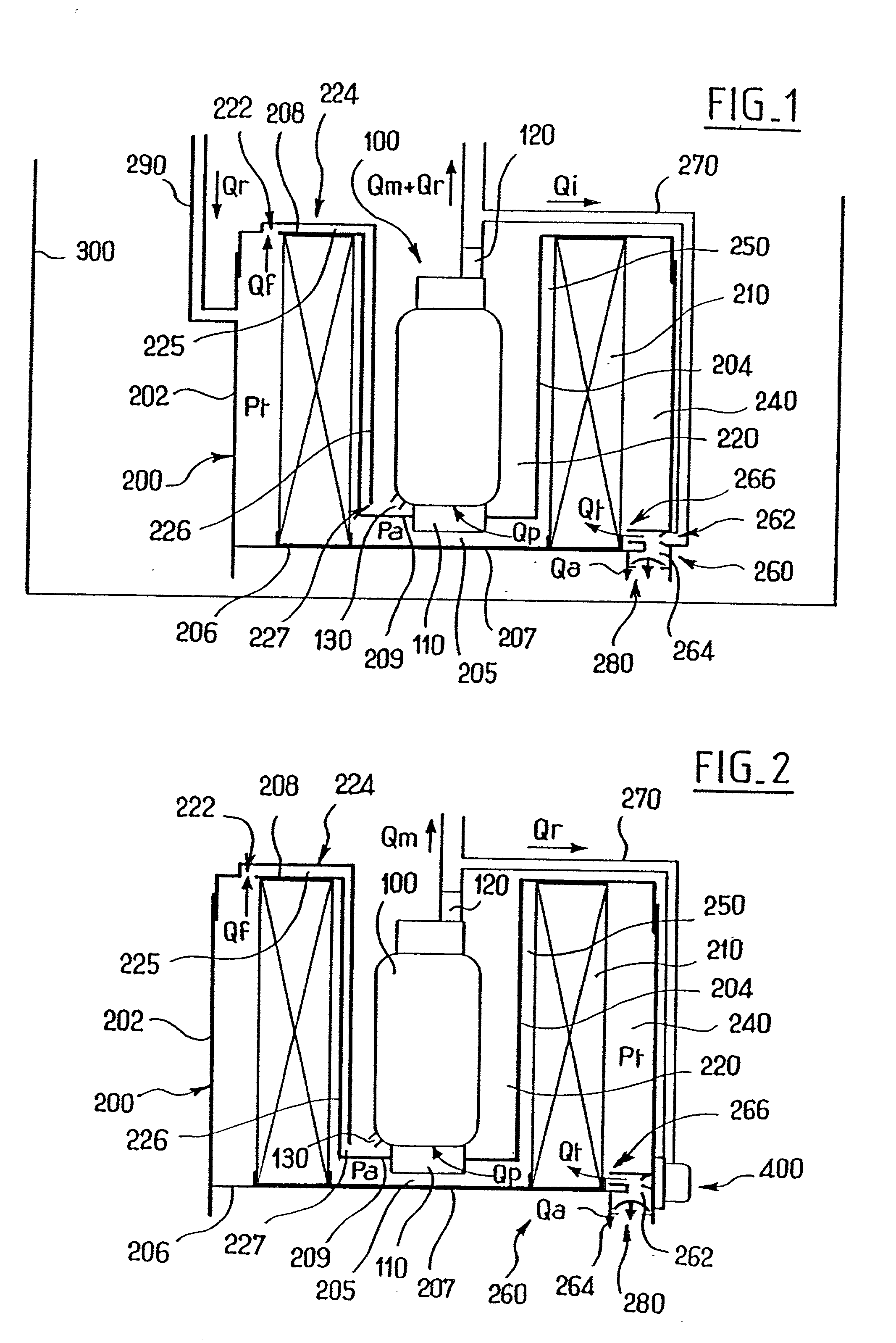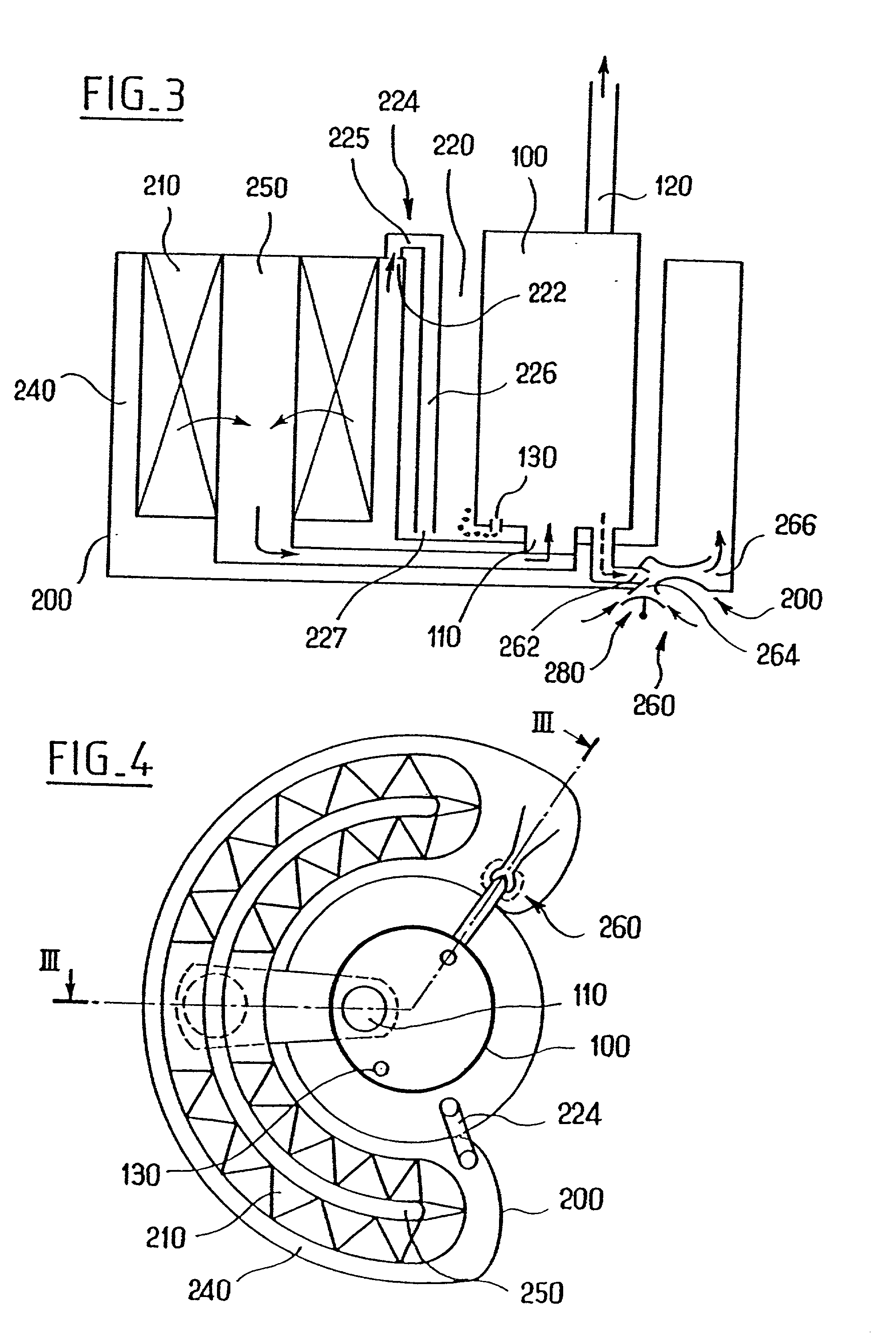Fuel-drawing device for a motor vehicle tank
- Summary
- Abstract
- Description
- Claims
- Application Information
AI Technical Summary
Benefits of technology
Problems solved by technology
Method used
Image
Examples
Embodiment Construction
[0032] As mentioned above, the device of the present invention comprises an electric drawing-off pump 100 and a fine filter 210 placed upstream from the pump, i.e. at the inlet thereof.
[0033] Various configurations of the fine filter 210 are described in greater detail below.
[0034] Furthermore, in the context of the present invention, the drawing-off pump 100 is a pilot operated pump. Even more precisely, the drawing-off pump 100 is pilot operated in such a manner that the flow of fuel passing through it, and consequently also passing through the fine filter 210 placed upstream therefrom, is substantially equal to the flow required for proper operation as a function of the instantaneous consumption of the engine.
[0035] Thus, when the drawing-off pump 100 sucks from a supply fed by a jet pump that receives an inlet flow coming directly or indirectly from the outlet of the drawing-off pump, the drawing-off pump is pilot operated so as to deliver a flow that varies in such a manner tha...
PUM
 Login to View More
Login to View More Abstract
Description
Claims
Application Information
 Login to View More
Login to View More - R&D
- Intellectual Property
- Life Sciences
- Materials
- Tech Scout
- Unparalleled Data Quality
- Higher Quality Content
- 60% Fewer Hallucinations
Browse by: Latest US Patents, China's latest patents, Technical Efficacy Thesaurus, Application Domain, Technology Topic, Popular Technical Reports.
© 2025 PatSnap. All rights reserved.Legal|Privacy policy|Modern Slavery Act Transparency Statement|Sitemap|About US| Contact US: help@patsnap.com



